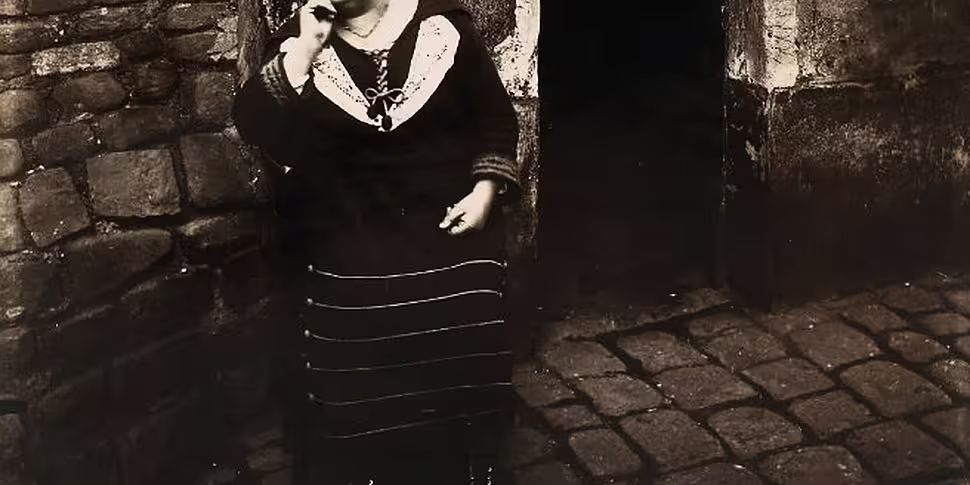The world’s oldest profession, prostitution has always been an indelible part of human civilisation. Even the great Catholic thinker Saint Thomas Aquinas defended the practice as a necessary evil, noting that ‘If you do away with harlots, the world will be convulsed with lust’. While brothels and prostitutes have served all members of society, from popes to paupers, there has long been a close relationship between soldiers and those who practice the world’s oldest profession.
Both selling their bodies for profit prostitutes found abundant work in the following the armies that marched across Europe for pay. This relationship hardly changed after the rise of national armies. Supplanting mercenary regiments as the main employers of soldiers, these national armies couldn’t export their soldiers during times of peace and so the world saw the rise of barracks and barracks towns.
These military concentrations were beacons for prostitutes who flocked to the lonely soldiers and the money burning holes in their pockets; the ‘Wrens’ of the Curragh being the most well known example of this. The same forces drew prostitutes to wharves, piers, and waterfronts where sailors disembarked eager to taste the pleasures of land after long voyages at sea. The capitol cities of Ireland proved to be a brutal combination of both and prostitutes and brothels proliferated along their streets, nowhere more so than in Dublin which soon garnered the nickname ‘Strumpet City’.
The rise of Ireland’s large scale sex trade has its origins in the English Civil War. Cromwell’s New Model Army was a professional force whose chief duty and obligation was not to any prince, king, or lord but to the state. The conflict had scarred the English psyche, however, and left the population adverse to the idea of a standing army; a mindset that saw men ostracised and belittled for wearing the redcoat right up to the First World War. As a result Ireland became used as one of the main holding grounds for troops in the English, and later British, Army; though the unruly nature of the island also contributed to this policy.
 A political cartoon depicting prostitutes, 1787
A political cartoon depicting prostitutes, 1787
The 19th century brought further change as industrialisation and the relative peace of post-Napoleonic Europe saw increases in urban populations and trade. The Famine acted as a further impetus for urban migration as people fled starvation and searched for a better life. Changes in social attitudes saw marriage rates decline and land passed on to the eldest son instead of the traditional parcelling out between heirs. With marriage options now limited many Irish women had little choice but to tend aging relatives or seek out work and a new way of life. For many women this search ended on the streets or in brothels.
The 19th century’s industrial and social revolutions were accompanied by a growth in religious and civic consciousness. In the wake of the Enlightenment and the revolutions it inspired Europe underwent a religious revival. While this led to the rise of religious charities and foundations across Europe in the 19th century it also inspired reforms in the laity and helped to set the roots of social reform and state welfare. With the bulk of prostitutes being impoverished and illiterate women in their twenties and thirties, not to mention the sinful nature of the profession itself, the practice became a key target for charities and reformers.
Known as the land of saints and sinners, it is easy to imagine that Ireland was not a very welcoming place for prostitutes. While there was never any attempt to make them welcome there was also little use of the jackboot in tackling Ireland’s prostitute population during the 19th and early 20th centuries. Instead religious philanthropy led the way, providing relief and shelter for prostitutes while attempting to redeem them from their sinful ways. While many of these charities and public workhouses offered rest and respite free from restriction, growing health concerns saw some institutions introduce confining and controlling measures when dealing with prostitutes.
Their intimate work made prostitutes susceptible to a wide range of illnesses, from all manner of venereal diseases to consumption and other easily transmitted sicknesses. This image of plague bearer had seen prostitutes demonised throughout history. The rapid rise of urban populations in the 19th century, however, saw disease skyrocket across cities in Ireland as people were piled atop one another in tenement housing. In Dublin these conditions were especially deplorable and it soon became regarded as one of the most overcrowded and disease ridden cities of the world.
 An American poster from the Second World War
An American poster from the Second World War
Though some measures had been taken during the 19th century to try and deal with the social issues plaguing Dublin there had been little improvement by the time war broke out in 1914. The First World War wrought changes in all spheres of life in Europe, including that of the prostitute. The increased number of soldiers and shipping proved a boon for those who sold their bodies for sex. Yet the need for able fighting men free from venereal disease saw nations across Europe crackdown on prostitution. It was the coming of the Free State, however, that would herald the greatest changes for Ireland’s prostitutes.
In 1921 the Irish War of Independence was at its height. In September of the same year Frank Duffy established the Legion of Mary with the aim of helping the Catholic laity fulfil their baptismal promises through good deeds and prayer. Though it is now the largest apostolic organisation of lay people in the Catholic Church the Legion’s beginnings were spent among Ireland’s destitute, most notably its prostitutes. The year after the Legion’s foundation Ireland became a Free State.
Whether because of the Legion’s campaigns, the years of conflict and new administration, the closing of British barracks, or a combination of all, the numbers of brothels and prostitutes active in Ireland fell after independence. That is not to say that the practice died out, far from it. Though the 1920s and ‘30s had seen most brothels close and Dublin’s infamous Monto lose its status as Europe’s largest red light district, prostitution continued on streets around Ireland.
The relationship between prostitute and the civil authorities continued to be largely amicable during the 20th century. Numbers of prostitutes and prostitution related crimes remained low across the country and in the early 1980s the remaining statues that targeted prostitutes were removed. This effective decriminalisation was short lived with the introduction of the Criminal Sexual Offences Act, 1993. Targeting prostitution in its myriad of forms this act launched a new chapter for Irish prostitution; one where the practice was no longer overlooked by the civil authorities.
Maria Luddy’s ‘Prostitution and Irish Society, 1800-1940’ offers a detailed analysis of the history of the sex trade in modern Ireland. Diarmaid Ferriter’s ‘Occasions of Sin’ offers a broader picture of attitudes toward sex in modern Ireland while Nils Johan Ringdal’s ‘Love for Sale’ tells the wider world history of prostitution.
For a full list of ‘Talking History’ book recommendations click here.









